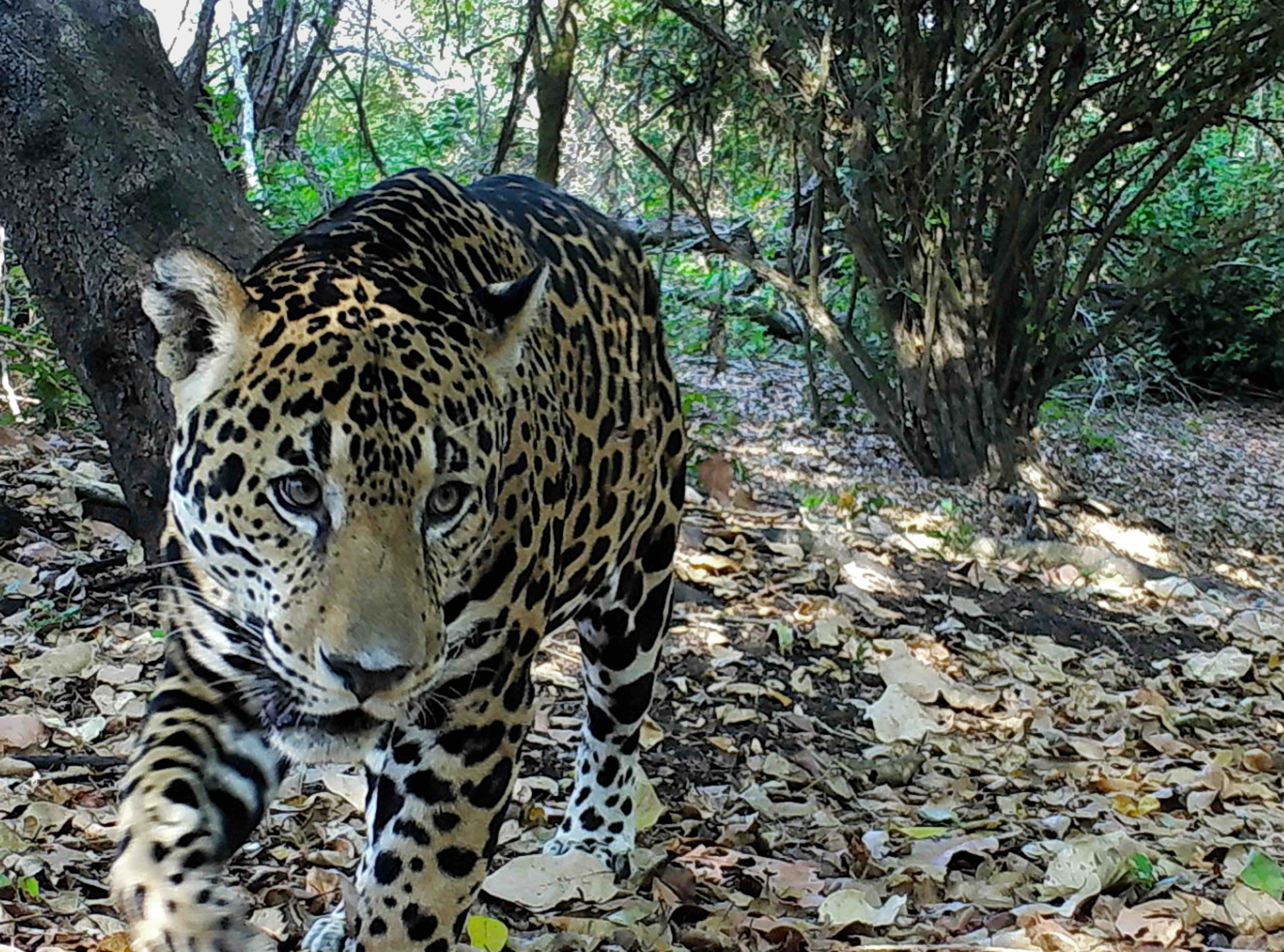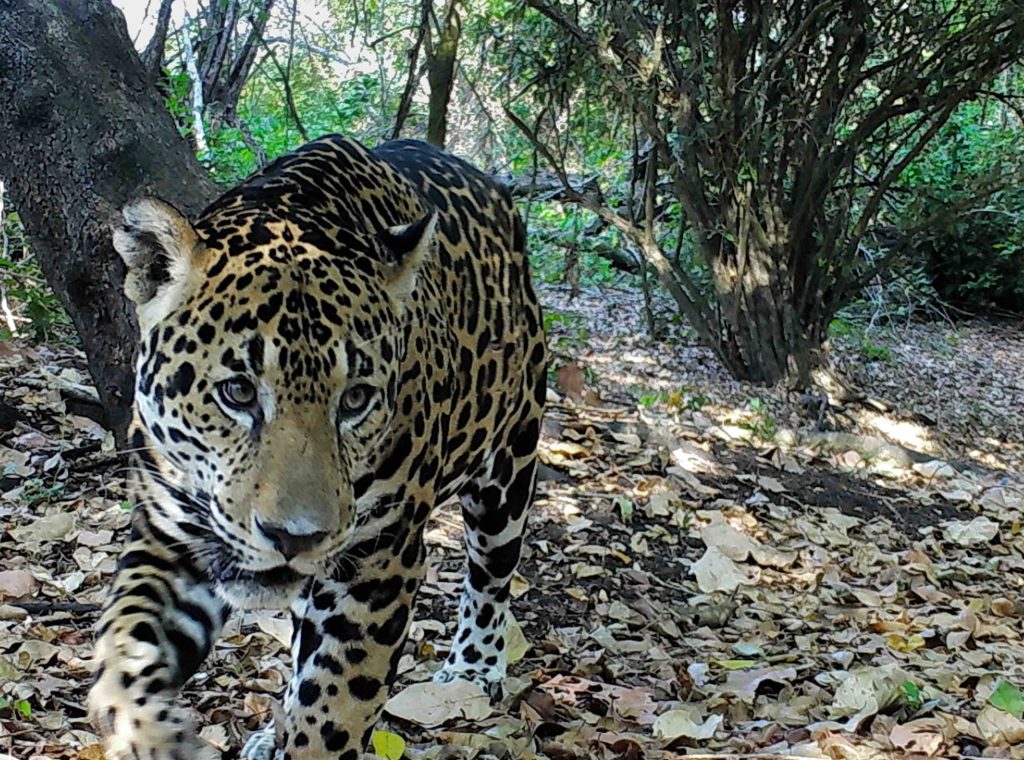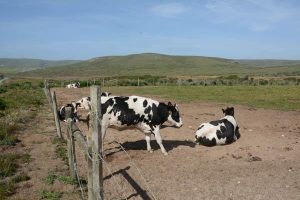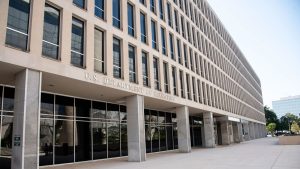- Jaguar habitats in the Mesoamerica region, spanning Mexico and Central America, are under severe threat from deforestation, illegal ranching, monoculture plantations, forest fires, and hunting, which disrupt connectivity between populations.
- Conservation efforts have focused on maintaining wildlife corridors, particularly in Guatemala, Belize and Honduras, to preserve genetic diversity and prevent population fragmentation.
- Local and international initiatives, such as the Jaguar Corridor Initiative and Jaguar 2030 plan, aim to protect Jaguar Conservation Units (JCUs) and promote sustainable land-use alternatives to deforestation.
- Collaboration between governments, NGOs and Indigenous communities is crucial to securing jaguar populations, as well as the broader ecosystems they help regulate, experts say.
Jaguar have always disregarded national borders, but some threats are keeping the big cats contained within the territories that they inhabits. The spread of extensive monoculture plantations, illegal ranches, forest fires, roads and hunters are putting severe pressure on this apex predator’s habitats in Mesoamerica, the region that includes Mexico and the countries of Central America.
To ensure that the emblematic feline survives in this area, conservationists say it’s crucial to protect a stretch of wildlife corridor that passes through northern Guatemala, crosses into Belize, and reaches up to northern Honduras. Throughout this entire region, there are key sites for safeguarding jaguars (Panthera onca). Known as Jaguar Conservation Units (JCUs), they host stable jaguar populations — or could, if some prevailing pressures were eliminated — and are united by connecting corridors.
“The loss of any of these areas would cut off the jaguar populations’ connectivity at a regional level,” says Roberto Salom-Pérez, Latin America director for the big cat conservation NGO Panthera.

For many scientists, organizations and governments, the challenge is implementing the Jaguar Corridor Initiative. The initiative aims to improve the connectivity between populations of the Americas’ largest feline throughout its entire range, which stretches from Mexico in the north to Argentina in the south. Similarly, an unprecedented global agreement to save the jaguar, which began in late 2018, continues to work toward the conservation of the species before 2030, ensuring that there are 30 priority landscapes in 16 of the 18 countries where jaguars are found.
Key to all this is the need to connect separate jaguar populations with one another. Currently, the species is at risk of losing its genetic diversity because individuals are unable to cross areas affected by deforestation. They become boxed into ever-shrinking spaces, cut off from opportunities to mate outside their gene pool. The loss of this top predator in any given landscape would provoke a devastating cascade effect that would change the structure of forests: prey populations would increase, thereby changing the vegetation profile, leading to the modification of forests.
” scrolling=”yes” class=”iframe-class”>
In Guatemala, forest fires are the main threat to nature. In Belize, it’s the drastic increase in monocultures and the presence of a road that splits an enormous habitat in half. In Honduras, the expansion of illegal ranches poses a major risk , as forests are cleared for pastures. These are all threats that are inexorably pushing the jaguar toward extinction.
Guatemala: Ranching and fires
In Guatemala’s Maya Forest, extensive illegal ranching is consuming the jaguar’s habitat. In this region, ranchers have discovered ways to grab land inside the Maya Biosphere Reserve, the country’s largest natural protected area. This reserve is a key site in ensuring the jaguar’s survival in Mesoamerica.
“They are going from having areas inhabited by many wild species to destroying them with fire, in order to have only two species: grass and cows,” says biologist Rony García Anleu, director of WCS Guatemala’s biological investigations department. For more than two decades, he’s studied this reserve in the department of Petén in northern Guatemala.
According to García Anleu, the conflict has been exacerbated because the loss of these forested areas and the prey species they hold means jaguars are increasingly pushed to prey on cattle. “They are harming the ranchers’ interests and they are annihilated because of that,” García Anleu says. “The jaguar is a protected species in the country and there are punishments for its annihilation, but people do it secretly.” Harming a jaguar is punishable by up to 10 years in prison and fines of up to 20,000 quetzals (about $2,600).

Spanning more than 2 million hectares (about 5 million acres), the Maya Biosphere Reserve represents one-fifth Guatemala’s total land area and is made up of at least 20 parks, natural protected areas and corridors. Since it hosts key jaguar populations, areas of intact habitat and enough prey to support the felines, the reserve acts as a Jaguar Conservation Unit.
”It is the largest JCU in Mesoamerica,” García Anleu says, adding that it connects all the protected areas, forests and jaguars in the Yucatán Peninsula. “It extends from northern Guatemala [and] passes throughout the whole peninsula and also to the east, with Belize.”
The main cause of deforestation in the Maya Forest is reported to be extensive ranching. A Texas State University study estimated that extensive illegal ranching is responsible for 59-87% of the forest loss in three areas of the Maya Biosphere Reserve. Fires are often started there to expand the deforested land inside the reserve.
” scrolling=”yes” class=”iframe-class”>
Biologist Bárbara Escobar-Anleu, country coordinator for Panthera and for the Jaguar Conservation Initiative in Guatemala, agrees that losing forest cover to fires is a serious issue. “[2024] has been terrible in Guatemala — completely unprecedented in comparison to all the fires of past years,” she says.
In the six months between December 2023 and June 2024, Guatemala’s National Coordinator for Disaster Reduction (CONRED) recorded 2,160 forest fires throughout the country — more than double the 964 fires, both forest and nonforest, recorded the previous year.
The departments of Petén and Izabal accounted for 536 of these latest fires, which burned a combined forest area of 124,088 hectares (306,628 acres), more than double the size of the country’s Tikal National Park. The situation is particularly dire in Izabal, on Guatemala’s northeastern Caribbean coast, which is a critical region for connecting jaguar populations. Until 2024, fires weren’t usually a problem there.
“It is believed that the majority are intentional fires, and they have specifically been in natural protected areas,” Escobar-Anleu says. “But this year, most protected areas in which I work, of which there are about nine, had [fires].”


Although Petén has some conserved areas and connects jaguar habitats with Belize and Mexico, Izabal is the link with the rest of Mesoamerica. Escobar-Anleu says this is the only area through which jaguars can still traverse to cross from Honduras to Belize. “It is quite an important and critical link, and maybe we have not paid enough attention to it,” she adds.
The big challenge, according to experts, is finding an alternative to ranching, which destroys ecosystems. One method is to reconnect the communities surrounding natural protected areas with the forest in order to avoid deforestation and intentional fires. This is where organizations such as WCS and the Guatemalan government support community members in learning to use the forest more sustainably. They do so through forest concessions and activities to diversify their sources of income. This process provides them with direct environmental, economic and social benefits.
“We have a model for community forest concessions that, although it is not perfect, it has solved many of the problems of habitat destruction,” says WCS Guatemala’s García Anleu. “People have the opportunity to manage a forest concession that extracts timber in a responsible and certified way. We want their extractive activities to be as harmless as possible for wildlife, especially for jaguars.”

According to a report by the Association of Forest Communities of Petén (ACOFOP), there are nine active community concessions in this area. Together, they occupy more than 485,000 hectares (1.2 million acres) of the Maya Biosphere Reserve, or nearly a quarter of its total area. “These show deforestation rates close to zero, much lower than the deforestation rates in the core area (1% per year) and the buffer zone (5.5% per year),” the report says.
In addition to activities related to timber use, these communities restore degraded areas, take monitoring trips, maintain firebreaks, and monitor threat detection sites. These threats can include land invasions, poaching, logging, illegal ranching and forest fires. Community members can also extract nontimber forest products such as sapodilla (Manilkara zapota), breadnut seeds, peppers, and xate palms. They can become involved in beekeeping, community tourism and making handicrafts. This allows communities to manage and protect the forest while strengthening the local economy.

Discussing jaguar conservation involves more than just talking about the conservation of an animal, according to Escobar-Anleu. It also involves discussions about ecosystems, habitats and forests that support the lives of numerous species and communities.
“I don’t really like the concept of ‘ecosystem services,’ because this supports the idea that they are only useful because they give us something,” she says. “However, thanks to these places, we have water, air and climate change mitigation. So discussing conservation is discussing our own well-being. It’s important that we start to recognize that everything is connected.”
Belize: Roads and monocultures
Belize is home to a key landscape for connecting the forests and mountains in the southwestern part of the country with the rest of the Maya Forest. The loss of this space would divide this majestic forest into two smaller forests. This, in turn, would threaten the survival of the species that live there, particularly the jaguars.
Losing this landscape is a real threat. In the past decade, the size of this strip of forest, the Maya Forest Corridor, has been reduced by more than 65%. Most of the destruction has been driven by the establishment of sugarcane monocultures and, in general, of large-scale agriculture.
” scrolling=”yes” class=”iframe-class”>
Parallel pressure comes from George Price Highway, which cuts through the corridor. It was one of the first highways built in the country, connecting Belize City with Belmopan. There are signs that it’s already impacting the movement of individual jaguars in central Belize. In particular, there’s evidence that female jaguars prefer to stay in less-fragmented territories and that the highway could be a difficult barrier for them to cross. This is because of the destruction of the forest on both sides of the highway and the increased volume of vehicle traffic associated with development and human population growth.
George Price Highway runs 124 kilometers (77 miles), but “there are fewer than 10 kilometers [6 mi] with a clear, unfragmented habitat connection on the side of the road; that is all there is,” says biologist Emma Sanchez, the Panthera coordinator in Belize. “After those 10 kilometers, there aren’t any more points through which jaguars can easily cross the highway.”

If the Maya Forest Corridor in Belize were to disappear, it lowers the possibility of jaguars being able to cross directly into Mexico, according to Sanchez, “because around there, there is already no forest connecting the areas. Everything is urbanized now and there are monocultures. There are no longer forests where jaguars and other cats can live or move without being run over.”
Using camera traps, several studies have demonstrated that jaguars are, in fact, moving from one area to another. “That ecological function still exists. The big question that is always there is: ‘Until when?’” says biologist Boris Miguel Arévalo, assistant director for land issues at WCS Belize.
To stop the threats caused by agriculture and roads, starting in 2014 a coalition of NGOS, universities, local communities and governments was formed to protect the connectivity between Belize’s forests.
In 2021, the Maya Forest Corridor Trust — made up of WCS Belize, the Maya Forest Belize Trust and the organization Re:wild — purchased more than 12,000 hectares (30,000 acres) of land. It’s location makes it vital for conserving the connectivity of protected areas in Belize, and also paves the way for ensuring the protection of other lands that WCS and Belize Zoo now manage.
Ahead of upcoming improvement works to George Price Highway, set to begin in the second half of 2025, the organizations met with the Belizean government to recommend measures ensuring that the road infrastructure is safer and friendlier for wild animals passing through the area.

“For a long time, we have seen things in a negative way, but now we can see all of this as an opportunity,” Arévalo says. “This has allowed us to sit down and discuss, not only with entities that think like us, but also with government ministries — of infrastructure, economic development, agriculture, and others — that are an integral part of the discussions.”
By having so many people in a meeting to agree on the necessary modifications so that the jaguars can cross through, “they are 100 steps ahead; it is an advantage,” Arévalo adds.

Honduras: Livestock and hunting
Over the last 20 years, a key piece of the jaguar corridor “puzzle” has faced a critical pressure: illegal ranching that’s driving the destruction of natural forests and their subsequent replacement with pastures in Honduras. This takes place in difficult-to-access areas in which there’s little to no state presence, “where the law of the strongest prevails, or, in other words, that of the criminal groups that present a threat,” says Edgard Scott, ecologist and the director of the WCS Honduras-Nicaragua program.
The same people who invade to set up farms in this region — the Moskitia Forest that represents the largest continuous expanse of protected areas in Honduras — also hunt the preferred prey of the jaguars. When populations of wild boars and deer decline, the jaguars risk being left without food.
” scrolling=”yes” class=”iframe-class”>
“It is a double attack: a reduction in the animal’s habitat size, but also in the populations of its natural prey,” Scott says, adding this is happening in the area made up of the Wetlands System of the Reserve of the Human (Reserva del Hombre) and Río Plátano Biosphere Reserve, Tawahka-Asangni Biosphere Reserve and Patuca National Park, in addition to another complex of riparian forests and gallery forests in their natural states. These are predominantly Indigenous territories inhabited by the Pech, Tawahka, Nahua, Tolupán, Miskito and Garífuna peoples, who have worked to strengthen their governance systems to curb deforestation.
In the past 15 years, the Moskitia Forest in Honduras “has suffered the most deforestation of any of the five remaining forests in Mesoamerica. It has been affected the most, with a loss of 30%,” Scott says.

Like in any area where connectivity between jaguar populations has been broken, the consequences would cascade, according to Scott. He says this implies harm not just to the feline’s habitat, but to its genetic biodiversity, with more cases of inbreeding. This could even cause the subsequent disappearance of the jaguar as we know it.
“There can no longer be genetic flow from the jaguars that are in Nicaragua, with those that are in Honduras, with those that are in Guatemala or Belize. This corridor, which in Central America has been a dream for many years, would be broken,” Scott says. “The conservation community’s dream has always been to maintain that functional habitat so that the jaguar can travel between the countries and so that we don’t have cases of isolated populations that, in the long run, could even cause its extinction.”

This was documented in a study published in late 2023, in which genetic samples taken from jaguars on the international borders of Central America demonstrated that forest cover may be allowing genetic flow for jaguars through local reproduction or the short-distance dispersion of the animals. These areas overlap with the locations of JCUs, which represent the main high-quality habitat reservoirs for jaguars in the region. However, urbanized areas, as well as the lack of vegetation and water sources, demonstrate the dispersion of jaguars over longer distances.
”I believe that it is a fight in which we can stay optimistic, because we are not alone. We have an alliance with the government and with Indigenous communities,” Scott says. He adds this is a battle to preserve both the jaguar and the rest of the ecosystems and natural resources.
The sum of all actions
“Those of us who work in conservation do this because we are hopeful that things can improve,” says Panthera’s Escobar-Anleu. She says the increasing number of organizations, institutions and governments around the world that are interested in creating collaborative projects for jaguar conservation is a great sign.
The experts all agreed that the Jaguar 2030 plan is a key example of this, since it involves several international institutions promoting jaguar conservation throughout the animal’s range. Raising awareness at a continental scale, especially in Mesoamerica, allows for the development and updating of improved conservation proposals.
A case in point is in Guatemala, Escobar-Anleu says. “Recently, an agreement was signed between the National Council for Protected Areas (CONAP) and the Embassy of India, because this country has a lot of experience working on the conservation of another big cat: the tiger. The idea is to exchange experiences and to have people who have worked on tiger conservation to be able to aid in planning for jaguar conservation,” she says.

Scott calls this a long-term fight. “We all want to bring knowledge, technical assistance and benefits to local communities, [and] also provide new tools to our allies and to government institutions throughout the entire region, so that our contribution can be the well-being of all of society. That is how we see it,” he says.
At the same time, governments and politicians are managing to build greater awareness regarding conservation movements around the world. This is because they now understand that this doesn’t affect just individual countries, but instead is “for the benefit of the human population and for the benefit of the environment on which we depend so much,” says WCS Belize’s Arévalo. “There is so much left for the jaguar to gain.”
“I see all of that as something very positive, because there are several areas for opportunity,” Escobar-Anleu says. “[The fact] that more and more institutions on a global level are becoming involved in the conservation of not just one species in one specific place, but recognizing the importance of working on a regional level — because animals do not know borders — invites [us] to keep addressing the issue in this way.”
Banner image: A jaguar in the Maya Biosphere Reserve in Guatemala. Image courtesy of WCS Guatemala.
This story was first published here in Spanish on Oct. 16, 2024.








